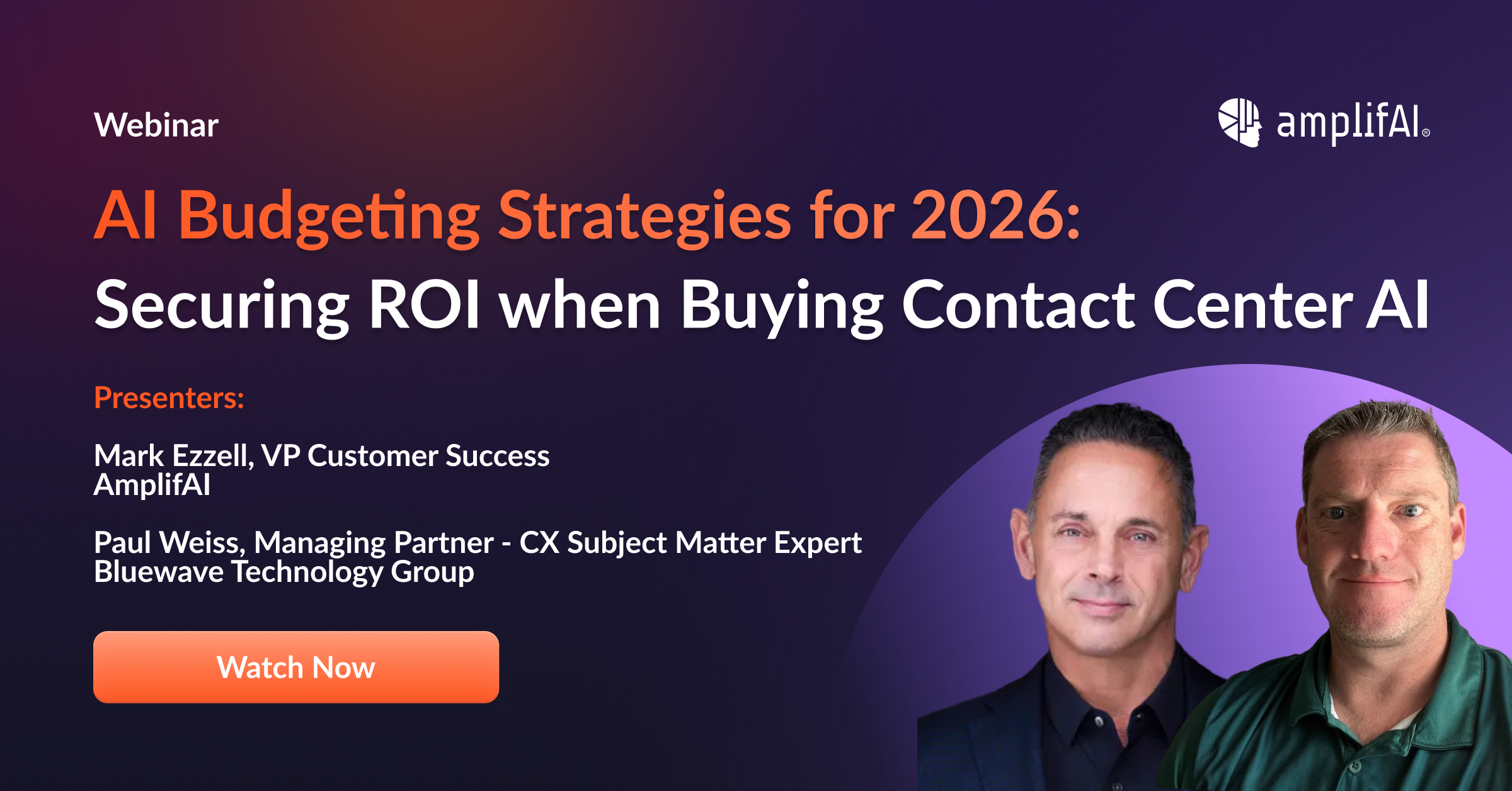Industry Spotlight


The pressure to “implement AI” has never been stronger — but buying AI and getting ROI from AI are two very different outcomes.
In this session, Mark Ezzell (AmplifAI) and Paul Weiss (Bluewave Technology) broke down the realities organizations face during budgeting season: unclear requirements, scattered data, misaligned expectations, and the myth that AI will transform the business the minute it’s turned on.
The conversation centered around one truth:
AI isn’t a tool you buy — it’s an organizational shift that requires clarity, prioritization, and adoption to drive impact.
The speakers explored how to identify real problems worth solving, assess your data readiness, and select AI partners who understand contact center operations deeply enough to deliver measurable value.
Key topics included:
.png)
Paul said it plainly:
“Too many companies start with the solution before they understand the why.”
Organizations often begin by shopping tools, but the most successful AI programs begin with granular problem definition:
This shift prevents endless vendor evaluation cycles, internal misalignment, and the dreaded “no decision” outcome that plagues most AI initiatives.
Bottom line: If you can’t clearly articulate the problem, AI can’t solve it.
.png)
Mark addressed one of the most common blockers:
“We’re not ready — our data isn’t perfect.”
The truth?
Most companies already have the required data.
It’s just scattered, siloed, or underutilized.
AI isn’t about creating new data — it’s about unifying what you already have:
AI gives you the ability to look across all of it at once to understand causes, correlations, and action paths that were previously invisible.
Bottom line:
Your data doesn’t need to be perfect. It just needs to be unified and usable.
.png)
While vendors often tout handle-time reduction or percentage lift in automation, both presenters reinforced a more important truth:
Real ROI comes from performance, retention, and revenue — not tiny efficiency tweaks.
Paul highlighted this with a client example:
Increasing conversion by just a few points led to a 25x ROI compared to the tech investment.
Most ROI exercises fail because they only look at:
But the biggest levers are actually:
Bottom line:
If your ROI model only focuses on efficiency, you’re missing the biggest opportunities.
.png)
Mark emphasized one of the most overlooked truths:
“Buying AI doesn’t mean you get value from AI.”
To truly realize ROI, organizations need:
Vendors provide technology.
Organizations create transformation.
And without adoption frameworks, the AI—even the best AI—will sit unused.
Bottom line:
AI requires partnership, change management, and ongoing reinforcement to drive impact.
.png)
Paul introduced a simple but powerful framework:
Frequency → Friction → Value
If a workflow checks all three boxes, it’s a priority for AI investment.
This helps organizations avoid:
Likewise, when evaluating vendors, teams should focus on:
Bottom line:
Clarity and prioritization create ROI — not technology alone.
“AI doesn’t show up magically and fix the organization. ROI comes from clarity, collaboration, and adoption — not just the technology you buy.”
— Paul Weiss, Managing Partner, Bluewave Technology
